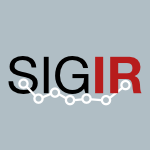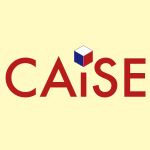230 papers:
 DAC-2015-Peeters #architecture #security
DAC-2015-Peeters #architecture #security- SoC security architecture: current practices and emerging needs (EP), p. 6.
 DATE-2015-JiaoMD #reasoning #synthesis
DATE-2015-JiaoMD #reasoning #synthesis- Knowledge-intensive, causal reasoning for analog circuit topology synthesis in emergent and innovative applications (FJ, SM, AD), pp. 1144–1149.
 DATE-2015-PorembaMLVX #3d #modelling #named
DATE-2015-PorembaMLVX #3d #modelling #named- DESTINY: a tool for modeling emerging 3D NVM and eDRAM caches (MP, SM, DL, JSV, YX), pp. 1543–1546.
 DATE-2015-SenniBTSGM
DATE-2015-SenniBTSGM- Potential applications based on NVM emerging technologies (SS, RMB, LT, GS, AG, BM), pp. 1012–1017.
 DATE-2015-YanF #design #energy #mobile #optimisation
DATE-2015-YanF #design #energy #mobile #optimisation- Energy-efficient cache design in emerging mobile platforms: the implications and optimizations (KY, XF), pp. 375–380.
 DATE-2015-ZhongLLZLZS #mobile #named
DATE-2015-ZhongLLZLZS #mobile #named- nCode: limiting harmful writes to emerging mobile NVRAM through code swapping (KZ, DL, LL, XZ, WL, QZ, EHMS), pp. 1305–1310.
 HT-2015-PeraN #recommendation
HT-2015-PeraN #recommendation- Analyzing Book-Related Features to Recommend Books for Emergent Readers (MSP, YKN), pp. 221–230.
 CHI-2015-0005RSP #mobile #named #physics #process
CHI-2015-0005RSP #mobile #named #physics #process- CrowdMonitor: Mobile Crowd Sensing for Assessing Physical and Digital Activities of Citizens during Emergencies (TL, CR, TS, VP), pp. 4083–4092.
 CHI-2015-ChenBBOH #behaviour #interactive
CHI-2015-ChenBBOH #behaviour #interactive- The Emergence of Interactive Behavior: A Model of Rational Menu Search (XC, GB, DPB, AO, AH), pp. 4217–4226.
 CHI-2015-EngelWACTNKKM #collaboration
CHI-2015-EngelWACTNKKM #collaboration- Collective Intelligence in Computer-Mediated Collaboration Emerges in Different Contexts and Cultures (DE, AWW, IA, CFC, MT, KN, CK, YJK, TWM), pp. 3769–3778.
 CSCW-2015-CarrollB #design #peer-to-peer
CSCW-2015-CarrollB #design #peer-to-peer- Creating Value Together: The Emerging Design Space of Peer-to-Peer Currency and Exchange (JMC, VB), pp. 1500–1510.
 CSCW-2015-FreemanBBH #game studies #gender #online #simulation
CSCW-2015-FreemanBBH #game studies #gender #online #simulation- Simulating Marriage: Gender Roles and Emerging Intimacy in an Online Game (GF, JB, SB, SCH), pp. 1191–1200.
 CSCW-2015-TorkilsheyggiH
CSCW-2015-TorkilsheyggiH- Visible but Unseen?: A Workplace Study of Blood-Test Icons on Electronic Emergency-Department Whiteboards (AáT, MH), pp. 798–807.
 CSCW-2015-ZagalskyFSZW #collaboration #education #framework #git
CSCW-2015-ZagalskyFSZW #collaboration #education #framework #git- The Emergence of GitHub as a Collaborative Platform for Education (AZ, JF, MADS, YZ, WW), pp. 1906–1917.
 DUXU-UI-2015-GomezFD #bound #education
DUXU-UI-2015-GomezFD #bound #education- Transcending Disciplinary, Cultural and National Boundaries: Emergent Technologies, New Education Landscape and the Cloud Workshop Project (RG, PF, RD), pp. 631–642.
 HCI-DE-2015-AlenljungS #design #perspective
HCI-DE-2015-AlenljungS #design #perspective- Designing Simulation-Based Training for Prehospital Emergency Care: Participation from a Participant Perspective (BA, HMS), pp. 297–306.
 HCI-IT-2015-SarsharNR #analysis #human-computer #on the #smarttech #usability
HCI-IT-2015-SarsharNR #analysis #human-computer #on the #smarttech #usability- On the Usability of Smartphone Apps in Emergencies — An HCI Analysis of GDACSmobile and SmartRescue Apps (PS, VN, JR), pp. 765–774.
 HIMI-IKC-2015-BotegaFOOBNA #user interface
HIMI-IKC-2015-BotegaFOOBNA #user interface- SAW-Oriented User Interfaces for Emergency Dispatch Systems (LCB, LCF, NPO, AO, CBB, VPdAN, RBdA), pp. 537–548.
 HIMI-IKC-2015-PereiraSBSCFC #multi
HIMI-IKC-2015-PereiraSBSCFC #multi- Multi-criteria Fusion of Heterogeneous Information for Improving Situation Awareness on Emergency Management Systems (VAPJ, MFS, LCB, JOdS, CSC, EF, MRdC), pp. 3–14.
 HIMI-IKC-2015-SouzaBSBCA #concept #framework
HIMI-IKC-2015-SouzaBSBCA #concept #framework- Conceptual Framework to Enrich Situation Awareness of Emergency Dispatchers (JOdS, LCB, JESS, CBB, MRdC, RBdA), pp. 33–44.
 HIMI-IKC-2015-TogawaK #collaboration #framework #using
HIMI-IKC-2015-TogawaK #collaboration #framework #using- Disaster Recovery Framework for e-Learning Environment Using Private Cloud Collaboration and Emergency Alerts (ST, KK), pp. 588–596.
 HIMI-IKD-2015-OliveiraBFC #framework #nondeterminism #visualisation
HIMI-IKD-2015-OliveiraBFC #framework #nondeterminism #visualisation- Uncertainty Visualization Framework for Improving Situational Awareness in Emergency Management Systems (NFO, LCB, LCF, MRdC), pp. 86–96.
 REFSQ-2015-AliJPMM
REFSQ-2015-AliJPMM- The Emerging Requirement for Digital Addiction Labels (RA, NJ, KP, SM, JM), pp. 198–213.
 ICSE-v2-2015-RashidMMC #re-engineering
ICSE-v2-2015-RashidMMC #re-engineering- Managing Emergent Ethical Concerns for Software Engineering in Society (AR, KM, CMC, RC), pp. 523–526.
 WICSA-2014-ChenB #agile #architecture #comprehension #development #refactoring #towards
WICSA-2014-ChenB #agile #architecture #comprehension #development #refactoring #towards- Towards an Evidence-Based Understanding of Emergence of Architecture through Continuous Refactoring in Agile Software Development (LC, MAB), pp. 195–204.
 CASE-2014-HanLH #development
CASE-2014-HanLH #development- Development of Autonomous Emergency Braking control system based on road friction (ICH, BCL, FCH), pp. 933–937.
 CASE-2014-LiuXL #approximate #capacity
CASE-2014-LiuXL #approximate #capacity- A queuing approximation method for capacity planning of emergency department with time-varying demand (QL, XX, RL), pp. 558–563.
 DAC-2014-XiaCK #algorithm #automation #detection #development
DAC-2014-XiaCK #algorithm #automation #detection #development- An Automobile Detection Algorithm Development for Automated Emergency Braking System (LX, TDC, KAAK), p. 6.
 DATE-2014-RostamiWPK #challenge #roadmap #security
DATE-2014-RostamiWPK #challenge #roadmap #security- Quo vadis, PUF?: Trends and challenges of emerging physical-disorder based security (MR, JBW, MP, FK), pp. 1–6.
 VLDB-2014-WangJ #memory management #scalability
VLDB-2014-WangJ #memory management #scalability- Scalable Logging through Emerging Non-Volatile Memory (TW, RJ), pp. 865–876.
 CSMR-WCRE-2014-BaudryMMCFC #evolution #named
CSMR-WCRE-2014-BaudryMMCFC #evolution #named- DIVERSIFY: Ecology-inspired software evolution for diversity emergence (BB, MM, CM, FC, FF, SC), pp. 395–398.
 ICPC-2014-PanichellaCPO #empirical #evolution #how
ICPC-2014-PanichellaCPO #empirical #evolution #how- How the evolution of emerging collaborations relates to code changes: an empirical study (SP, GC, MDP, RO), pp. 177–188.
 CHI-2014-BetzW #communication #concept #named
CHI-2014-BetzW #communication #concept #named- EmergencyMessenger: a text based communication concept for indoor firefighting (MB, VW), pp. 1515–1524.
 CHI-2014-CrivellaroCBWO #facebook #social
CHI-2014-CrivellaroCBWO #facebook #social- A pool of dreams: facebook, politics and the emergence of a social movement (CC, RC, JB, PCW, PO), pp. 3573–3582.
 CHI-2014-FastSWBB #ide #programming
CHI-2014-FastSWBB #ide #programming- Emergent, crowd-scale programming practice in the IDE (EF, DS, LW, JRB, MSB), pp. 2491–2500.
 CHI-2014-LindtnerHD #hardware #human-computer
CHI-2014-LindtnerHD #hardware #human-computer- Emerging sites of HCI innovation: hackerspaces, hardware startups & incubators (SL, GDH, PD), pp. 439–448.
 CSCW-2014-MurphyRX #case study #collaboration #privacy
CSCW-2014-MurphyRX #case study #collaboration #privacy- Privacy practices in collaborative environments: a study of emergency department staff (ARM, MCR, HX), pp. 269–282.
 CSCW-2014-OleksikMJ #collaboration #design
CSCW-2014-OleksikMJ #collaboration #design- Study of electronic lab notebook design and practices that emerged in a collaborative scientific environment (GO, NMF, RJ), pp. 120–133.
 DHM-2014-YouZLW #collaboration #design
DHM-2014-YouZLW #collaboration #design- Service-Oriented Emergency Management Collaboration System Design (FY, RPZ, PTL, JMW), pp. 649–660.
 DUXU-ELAS-2014-PetkovB #design
DUXU-ELAS-2014-PetkovB #design- Hardwired Critical Action Panels for Emergency Preparedness: — Design Principles and CAP Design for Offshore Petroleum Platforms (BP, AOB), pp. 326–337.
 DUXU-ELAS-2014-VilarDRNV #artificial reality #case study #using
DUXU-ELAS-2014-VilarDRNV #artificial reality #case study #using- A Pilot Study Using Virtual Reality to Investigate the Effects of Emergency Egress Signs Competing with Environmental Variables on Route Choices (EV, ED, FR, PN, EV), pp. 369–377.
 HCI-AS-2014-OchoaMOHB #comprehension #interactive #mobile
HCI-AS-2014-OchoaMOHB #comprehension #interactive #mobile- Understanding the Interaction Support for Mobile Work in an Emergency Room (SFO, AM, NO, RH, JB), pp. 312–322.
 HCI-TMT-2014-OlssonE #design
HCI-TMT-2014-OlssonE #design- Methodological Capabilities for Emergent Design (CMO, JE), pp. 110–121.
 CIKM-2014-ChuWCC #metric #microblog #monitoring #topic
CIKM-2014-ChuWCC #metric #microblog #monitoring #topic- Microblog Topic Contagiousness Measurement and Emerging Outbreak Monitoring (VWC, RKW, FC, CHC), pp. 1099–1108.
 CIKM-2014-LiuXD #mining #network #predict
CIKM-2014-LiuXD #mining #network #predict- Relationship Emergence Prediction in Heterogeneous Networks through Dynamic Frequent Subgraph Mining (YL, SX, LD), pp. 1649–1658.
 ICPR-2014-ChironGM #behaviour #parametricity #using
ICPR-2014-ChironGM #behaviour #parametricity #using- Discovering Emergent Behaviors from Tracks Using Hierarchical Non-parametric Bayesian Methods (GC, PGK, MM), pp. 2185–2190.
 ICPR-2014-KhanMMT #image
ICPR-2014-KhanMMT #image- Emergent Properties from Feature Co-occurrence in Image Collections (UMK, SM, BM, AT), pp. 2347–2352.
 KDD-2014-SchubertWK #detection #named #scalability #topic
KDD-2014-SchubertWK #detection #named #scalability #topic- SigniTrend: scalable detection of emerging topics in textual streams by hashed significance thresholds (ES, MW, HPK), pp. 871–880.
 KDD-2014-SongZSS #behaviour #predict #scalability
KDD-2014-SongZSS #behaviour #predict #scalability- Prediction of human emergency behavior and their mobility following large-scale disaster (XS, QZ, YS, RS), pp. 5–14.
 KDIR-2014-Nakano #induction #string
KDIR-2014-Nakano #induction #string- Emergent Induction of L-system Grammar from a String with Deletion-type Transmutation (RN), pp. 397–402.
 GPCE-2014-MalakutiA #behaviour #composition #representation
GPCE-2014-MalakutiA #behaviour #composition #representation- Emergent gummy modules: modular representation of emergent behavior (SM, MA), pp. 15–24.
 RE-2014-ValencaAHJB #case study #collaboration #contest #ecosystem #requirements
RE-2014-ValencaAHJB #case study #collaboration #contest #ecosystem #requirements- Competition and collaboration in requirements engineering: A case study of an emerging software ecosystem (GV, CFA, VH, SJ, SB), pp. 384–393.
 SAC-2014-BillhardtLOBD
SAC-2014-BillhardtLOBD- Intelligent event processing for emergency medical assistance (HB, ML, SO, RB, JD), pp. 200–206.
 ICSE-2014-RibeiroBK #interface #maintenance
ICSE-2014-RibeiroBK #interface #maintenance- Feature maintenance with emergent interfaces (MR, PB, CK), pp. 989–1000.
 ASE-2013-Fard #behaviour #detection #distributed #independence #using
ASE-2013-Fard #behaviour #detection #distributed #independence #using- Detecting and fixing emergent behaviors in Distributed Software Systems using a message content independent method (FHF), pp. 746–749.
 CASE-2013-DingLZC #physics #simulation
CASE-2013-DingLZC #physics #simulation- Emergency evacuation simulation in staircases considering evacuees’ physical and psychological status (ND, PBL, HZ, TC), pp. 741–746.
 CASE-2013-ShaoLW #approach #markov
CASE-2013-ShaoLW #approach #markov- A Markov chain approach to study flow disruptions on surgery in emergency care (XS, JL, DAW), pp. 990–995.
 CASE-2013-TanTL #policy #resource management
CASE-2013-TanTL #policy #resource management- Improving patient length-of-stay in emergency department through dynamic resource allocation policies (KWT, WHT, HCL), pp. 984–989.
 CASE-2013-ViswanadhamVK
CASE-2013-ViswanadhamVK- Orchestrating the print supply chain in emerging markets (NV, SV, RK), pp. 213–218.
 DAC-2013-SinghSKH #bibliography #manycore #roadmap
DAC-2013-SinghSKH #bibliography #manycore #roadmap- Mapping on multi/many-core systems: survey of current and emerging trends (AKS, MS, AK, JH), p. 10.
 DATE-2013-HuYH0 #concurrent #low cost #multi #named #thread
DATE-2013-HuYH0 #concurrent #low cost #multi #named #thread- Orchestrator: a low-cost solution to reduce voltage emergencies for multi-threaded applications (XH, GY, YH, XL), pp. 208–213.
 DATE-2013-KhanSGH #collaboration #complexity #reduction
DATE-2013-KhanSGH #collaboration #complexity #reduction- Hardware-software collaborative complexity reduction scheme for the emerging HEVC intra encoder (MUKK, MS, MG, JH), pp. 125–128.
 CSCW-2013-Barlow #chat #using
CSCW-2013-Barlow #chat #using- Emergent roles in decision-making tasks using group chat (JBB), pp. 1505–1514.
 DUXU-CXC-2013-WilleMM #mobile #prototype
DUXU-CXC-2013-WilleMM #mobile #prototype- A Mobile Prototype for Clinical Emergency Calls (CW, TM, AM), pp. 480–487.
 DUXU-NTE-2013-DonovanSS #gesture #interactive #research
DUXU-NTE-2013-DonovanSS #gesture #interactive #research- Gestural, Emergent and Expressive: Three Research Themes for Haptic Interaction (JD, GS, JS), pp. 352–361.
 DUXU-NTE-2013-VilarRNTDF #question
DUXU-NTE-2013-VilarRNTDF #question- Are Emergency Egress Signs Strong Enough to Overlap the Influence of the Environmental Variables? (EV, FR, PN, LT, ED, EF), pp. 205–214.
 HCI-AMTE-2013-RandallCTL #design #multi
HCI-AMTE-2013-RandallCTL #design #multi- Applying Contextual Design to Multiple Teams in Emergency Management (TR, JC, GT, JL), pp. 109–118.
 HCI-UC-2013-SebilloTVGR #design #framework #interactive #mobile
HCI-UC-2013-SebilloTVGR #design #framework #interactive #mobile- A Framework for Community-Oriented Mobile Interaction Design in Emerging Regions (MS, GT, GV, PDG, MR), pp. 342–351.
 HIMI-HSM-2013-DamrongratKI #multi #ontology #representation #simulation #using
HIMI-HSM-2013-DamrongratKI #multi #ontology #representation #simulation #using- Increasing Situational Awareness of Indoor Emergency Simulation Using Multilayered Ontology-Based Floor Plan Representation (CD, HK, MI), pp. 39–45.
 KDIR-KMIS-2013-OliveiraCL #analysis #concept
KDIR-KMIS-2013-OliveiraCL #analysis #concept- Business Analytics — Analysis of an Emerging Concept (MPVdO, CXC, MBL), pp. 547–551.
 KEOD-2013-LeelawatI #enterprise #perspective
KEOD-2013-LeelawatI #enterprise #perspective- Emergency Response Organization through Enterprise Engineering Perspective (NL, JI), pp. 148–155.
 SIGIR-2013-ChenALC #detection #microblog #topic
SIGIR-2013-ChenALC #detection #microblog #topic- Emerging topic detection for organizations from microblogs (YC, HA, ZL, TSC), pp. 43–52.
 SIGIR-2013-RaueAJ #exclamation #requirements #social #social media
SIGIR-2013-RaueAJ #exclamation #requirements #social #social media- #trapped!: social media search system requirements for emergency management professionals (SR, LA, CWJ), pp. 1073–1076.
 REFSQ-2013-HoffmannBL #comprehension #development #process
REFSQ-2013-HoffmannBL #comprehension #development #process- The Emergence of Mutual and Shared Understanding in the System Development Process (AH, EACB, JML), pp. 174–189.
 WICSA-ECSA-2012-KezniklBPK #component #towards
WICSA-ECSA-2012-KezniklBPK #component #towards- Towards Dependable Emergent Ensembles of Components: The DEECo Component Model (JK, TB, FP, MK), pp. 249–252.
 CASE-2012-HoerningSWS #analysis #robust #simulation #tool support
CASE-2012-HoerningSWS #analysis #robust #simulation #tool support- Improving discrete event simulation in the emergency department with innovative and robust input analysis tools (SH, JS, TW, LS), pp. 131–136.
 CASE-2012-TanWL #queue
CASE-2012-TanWL #queue- Improving patient flow in emergency department through dynamic priority queue (KWT, CW, HCL), pp. 125–130.
 DATE-2012-Marinissen #2d #3d #challenge #testing
DATE-2012-Marinissen #2d #3d #challenge #testing- Challenges and emerging solutions in testing TSV-based 2 1 over 2D- and 3D-stacked ICs (EJM), pp. 1277–1282.
 CHI-2012-PierceP #energy #interactive #monitoring
CHI-2012-PierceP #energy #interactive #monitoring- Beyond energy monitors: interaction, energy, and emerging energy systems (JP, EP), pp. 665–674.
 CSCW-2012-SuzukiKUII #collaboration #multi
CSCW-2012-SuzukiKUII #collaboration #multi- Analyzing the structure of the emergent division of labor in multiparty collaboration (NS, TK, IU, SI, SI), pp. 1233–1236.
 ICEIS-J-2012-Loucopoulos12a #requirements
ICEIS-J-2012-Loucopoulos12a #requirements- Requirements Engineering for Emergent Application Software (PL), pp. 18–28.
 ICEIS-v3-2012-FrischbierGMRW #enterprise
ICEIS-v3-2012-FrischbierGMRW #enterprise- Emergence as Competitive Advantage — Engineering Tomorrow’s Enterprise Software Systems (SF, MG, DM, AR, CW), pp. 181–186.
 CIKM-2012-KootiMGC #network #online #predict #social
CIKM-2012-KootiMGC #network #online #predict #social- Predicting emerging social conventions in online social networks (FK, WAM, PKG, MC), pp. 445–454.
 CIKM-2012-YinKRC #microblog #named
CIKM-2012-YinKRC #microblog #named- ESA: emergency situation awareness via microbloggers (JY, SK, BR, MAC), pp. 2701–2703.
 ICML-2012-DundarAQR #learning #modelling #online
ICML-2012-DundarAQR #learning #modelling #online- Bayesian Nonexhaustive Learning for Online Discovery and Modeling of Emerging Classes (MD, FA, AQ, BR), p. 18.
 KDD-2012-YuDSW #feature model #mining #streaming
KDD-2012-YuDSW #feature model #mining #streaming- Mining emerging patterns by streaming feature selection (KY, WD, DAS, XW), pp. 60–68.
 KDIR-2012-OLeary #enterprise #internet #ontology #social #social media
KDIR-2012-OLeary #enterprise #internet #ontology #social #social media- Enterprise Ontologies — Emerging Issues from the Internet of Things and Social Media (DEO).
 KEOD-2012-DiasMS #enterprise #health #ontology #using
KEOD-2012-DiasMS #enterprise #health #ontology #using- Using Enterprise Ontology for Improving the National Health System — Demonstrated in the Case of a Pharmacy and an Emergency Department (DGD, CM, MMdS), pp. 441–451.
 SEKE-2012-MireslamiMF #behaviour #detection #distributed
SEKE-2012-MireslamiMF #behaviour #detection #distributed- Detecting Emergent Behavior in Distributed Systems Caused by Overgeneralization (SM, MM, BHF), pp. 70–73.
 ASPLOS-2012-FerdmanAKVAJKPAF #case study #hardware
ASPLOS-2012-FerdmanAKVAJKPAF #case study #hardware- Clearing the clouds: a study of emerging scale-out workloads on modern hardware (MF, AA, YOK, SV, MA, DJ, CK, ADP, AA, BF), pp. 37–48.
 ASPLOS-2012-GovindanWSU #energy
ASPLOS-2012-GovindanWSU #energy- Leveraging stored energy for handling power emergencies in aggressively provisioned datacenters (SG, DW, AS, BU), pp. 75–86.
 HPCA-2012-AwasthiSSRBS #performance
HPCA-2012-AwasthiSSRBS #performance- Efficient scrub mechanisms for error-prone emerging memories (MA, MS, KS, BR, RB, VS), pp. 15–26.
 DATE-2011-AliCMB #encryption #hardware #multi #security
DATE-2011-AliCMB #encryption #hardware #multi #security- Multi-level attacks: An emerging security concern for cryptographic hardware (SA, RSC, DM, SB), pp. 1176–1179.
 DATE-2011-MadaniTCCD #detection #energy #standard
DATE-2011-MadaniTCCD #detection #energy #standard- An energy-efficient 64-QAM MIMO detector for emerging wireless standards (NMM, TT, JC, PC, WRD), pp. 246–251.
 DATE-2011-PanHHL #effectiveness
DATE-2011-PanHHL #effectiveness- A cost-effective substantial-impact-filter based method to tolerate voltage emergencies (SP, YH, XH, XL), pp. 311–315.
 HT-2011-Hearst #roadmap #user interface
HT-2011-Hearst #roadmap #user interface- Emerging trends in search user interfaces (MAH), pp. 5–6.
 SIGMOD-2011-AlvanakiMRW #detection #named #topic #web
SIGMOD-2011-AlvanakiMRW #detection #named #topic #web- EnBlogue: emergent topic detection in web 2.0 streams (FA, SM, KR, GW), pp. 1271–1274.
 SIGMOD-2011-HuangGL #datalog #interactive #tutorial
SIGMOD-2011-HuangGL #datalog #interactive #tutorial- Datalog and emerging applications: an interactive tutorial (SSH, TJG, BTL), pp. 1213–1216.
 SIGMOD-2011-OzcanHBBLL #data analysis #enterprise #roadmap
SIGMOD-2011-OzcanHBBLL #data analysis #enterprise #roadmap- Emerging trends in the enterprise data analytics: connecting Hadoop and DB2 warehouse (FÖ, DH, KSB, AB, CJL, YL), pp. 1161–1164.
 ICSM-2011-Dragan #object-oriented
ICSM-2011-Dragan #object-oriented- Emergent laws of method and class stereotypes in object oriented software (ND), pp. 550–555.
 CHI-2011-OregliaLZ #case study #design #experience
CHI-2011-OregliaLZ #case study #design #experience- Designing for emerging rural users: experiences from China (EO, YL, WZ), pp. 1433–1436.
 CHI-2011-RaijGKS #mobile #privacy #risk management #smarttech
CHI-2011-RaijGKS #mobile #privacy #risk management #smarttech- Privacy risks emerging from the adoption of innocuous wearable sensors in the mobile environment (AR, AG, SK, MBS), pp. 11–20.
 CHI-2011-ToupsKHS #coordination #learning #simulation
CHI-2011-ToupsKHS #coordination #learning #simulation- Zero-fidelity simulation of fire emergency response: improving team coordination learning (ZOT, AK, WAH, NS), pp. 1959–1968.
 CSCW-2011-Cutrell
CSCW-2011-Cutrell- Technology for emerging markets at MSR india (EC), pp. 9–16.
 DHM-2011-ZhangWZQL #complexity #fault
DHM-2011-ZhangWZQL #complexity #fault- Task Complexity Related Training Effects on Operation Error of Spaceflight Emergency Task (YZ, BW, XZ, WQ, ML), pp. 436–445.
 DUXU-v1-2011-YeratziotisSVN #analysis
DUXU-v1-2011-YeratziotisSVN #analysis- Analysis of Emergent Use for Wellbeing Service Innovation (AY, CS, JV, MN), pp. 332–341.
 DUXU-v2-2011-MooreBC #locality #optimisation #prototype
DUXU-v2-2011-MooreBC #locality #optimisation #prototype- Optimisation of Sound Localisation for Emergency Vehicle Sirens through a Prototype Audio System (JDM, SB, VC), pp. 177–186.
 HCI-MIIE-2011-PlocherJC #using
HCI-MIIE-2011-PlocherJC #using- Using Sound Patterns to Enhance Directional Sound for Emergency Route Guidance (TP, ZJJ, FYDC), pp. 329–337.
 HIMI-v2-2011-KajioWTS #design
HIMI-v2-2011-KajioWTS #design- Relationality-Oriented Systems Design for Emergence, Growth, and Operation of Relationality (TK, MW, IT, KS), pp. 381–387.
 OCSC-2011-SharminB #design #online
OCSC-2011-SharminB #design #online- Online Design Discussion Sites: Emerging Resource for Creative Design (MS, BPB), pp. 219–228.
 ICEIS-v1-2011-ZhaoL
ICEIS-v1-2011-ZhaoL- Model of the Emergencies Risk Transmission in Price-driven Supply Chain (YZ, JL), pp. 405–411.
 ICEIS-v2-2011-DingL #database #design #security
ICEIS-v2-2011-DingL #database #design #security- Based on “Scenarios-response” Model of Security Plans for Emergency Management System of Database Design (DD, XL), pp. 210–212.
 ICEIS-v2-2011-YangRL #research
ICEIS-v2-2011-YangRL #research- Emergency Logistics Systems Synnergetics Research (YY, YR, HL), pp. 282–286.
 ICEIS-v3-2011-ZhangF #algorithm #evaluation #performance
ICEIS-v3-2011-ZhangF #algorithm #evaluation #performance- Performance Evaluation of Emergency Logistics based on DEA-AHP Algorithm (JZ, SF), pp. 527–532.
 CIKM-2011-KasiviswanathanMBS #detection #learning #taxonomy #topic #using
CIKM-2011-KasiviswanathanMBS #detection #learning #taxonomy #topic #using- Emerging topic detection using dictionary learning (SPK, PM, AB, VS), pp. 745–754.
 KDD-2011-BatistaKMR #data mining #mining
KDD-2011-BatistaKMR #data mining #mining- SIGKDD demo: sensors and software to allow computational entomology, an emerging application of data mining (GEAPAB, EJK, AMN, ER), pp. 761–764.
 KEOD-2011-OtcenaskovaBC #concept #health #modelling
KEOD-2011-OtcenaskovaBC #concept #health #modelling- Conceptual Modelling for Management of Public Health in Case of Emergency Situations (TO, VB, PC), pp. 344–348.
 SAC-2011-AnttonenSMT #framework #roadmap #web
SAC-2011-AnttonenSMT #framework #roadmap #web- Transforming the web into a real application platform: new technologies, emerging trends and missing pieces (MA, AS, TM, AT), pp. 800–807.
 CASE-2010-LiH #analysis #framework #modelling #problem
CASE-2010-LiH #analysis #framework #modelling #problem- Modeling and analysis of hospital emergency department: An analytical framework and problem formulation (JL, PKH), pp. 897–902.
 CASE-2010-MazierXS #scheduling
CASE-2010-MazierXS #scheduling- Scheduling inpatient admission under high demand of emergency patients (AM, XX, MS), pp. 792–797.
 DAC-2010-NiuCXX #process
DAC-2010-NiuCXX #process- Impact of process variations on emerging memristor (DN, YC, CX, YX), pp. 877–882.
 SEFM-2010-MassinkLBH #algebra #analysis #approach #process #scalability
SEFM-2010-MassinkLBH #algebra #analysis #approach #process #scalability- A Scalable Fluid Flow Process Algebraic Approach to Emergency Egress Analysis (MM, DL, AB, MDH), pp. 169–180.
 CHI-2010-LindleyHS #case study #design #game studies
CHI-2010-LindleyHS #case study #design #game studies- Designing a technological playground: a field study of the emergence of play in household messaging (SEL, RHRH, AS), pp. 2351–2360.
 CSCW-2010-MentisRR #interactive
CSCW-2010-MentisRR #interactive- Invisible emotion: information and interaction in an emergency room (HMM, MR, MBR), pp. 311–320.
 CAiSE-2010-AbdullahSI #challenge #information management #research
CAiSE-2010-AbdullahSI #challenge #information management #research- Emerging Challenges in Information Systems Research for Regulatory Compliance Management (NSA, SWS, MI), pp. 251–265.
 CIKM-2010-LiuFZ #folksonomy #ontology
CIKM-2010-LiuFZ #folksonomy #ontology- Ontology emergence from folksonomies (KL, BF, WZ), pp. 1109–1118.
 KDD-2010-GoorhaU #roadmap
KDD-2010-GoorhaU #roadmap- Discovery of significant emerging trends (SG, LHU), pp. 57–64.
 KMIS-2010-Kenfack #collaboration #communication #community #information management
KMIS-2010-Kenfack #collaboration #communication #community #information management- JADE Agent is Intermediation System (JAIS) for Knowledge Emergence in Community of Practices — Intelligent Information Systems, Best Practices & Communities of Practice, Cooperation, Communication, Collaboration and Knowledge Sharing (CK), pp. 372–377.
 SEKE-2010-MoshirpourMF #behaviour #detection #distributed #specification #using
SEKE-2010-MoshirpourMF #behaviour #detection #distributed #specification #using- Detecting Emergent Behavior in Distributed Systems Using Scenario-Based Specifications (MM, AM, BHF), pp. 349–354.
 REFSQ-2010-FerrariSHGSM #architecture #interactive #prototype #requirements
REFSQ-2010-FerrariSHGSM #architecture #interactive #prototype #requirements- Requirements and Systems Architecture Interaction in a Prototypical Project: Emerging Results (RF, OS, CH, JG, WS, NHM), pp. 23–29.
 ICSE-2010-KornstaedtR #development #eclipse #float #framework
ICSE-2010-KornstaedtR #development #eclipse #float #framework- Staying afloat in an expanding sea of choices: emerging best practices for eclipse rich client platform development (AK, ER), pp. 59–67.
 ICSE-2010-Treude #collaboration #development
ICSE-2010-Treude #collaboration #development- The role of emergent knowledge structures in collaborative software development (CT), pp. 389–392.
 CASE-2009-WangLCM #optimisation #performance #social
CASE-2009-WangLCM #optimisation #performance #social- Efficient optimization of building emergency evacuation considering social bond of evacuees (PW, PBL, SCC, KLM), pp. 250–255.
 DATE-2009-MadridSNGAVMA #framework #integration
DATE-2009-MadridSNGAVMA #framework #integration- Integration of an advanced emergency call subsystem into a car-gateway platform (NMM, RS, ARN, JSG, AlSA, PSV, CRM, FA), pp. 1100–1105.
 HT-2009-Ammann #community #network
HT-2009-Ammann #community #network- Jorn barger, the newspage network and the emergence of the weblog community (RA), pp. 279–288.
 LATA-2009-NakamuraHT #predict
LATA-2009-NakamuraHT #predict- Prediction of Creole Emergence in Spatial Language Dynamics (MN, TH, ST), pp. 614–625.
 CHI-2009-ShenLD #video #what
CHI-2009-ShenLD #video #what- What’s next?: emergent storytelling from video collection (EYTS, HL, GD), pp. 809–818.
 HCI-AUII-2009-ZarraonandiaVDA #learning #protocol
HCI-AUII-2009-ZarraonandiaVDA #learning #protocol- A Virtual Environment for Learning Aiport Emergency Management Protocols (TZ, MRRV, PD, IA), pp. 228–235.
 HCI-NIMT-2009-YonemuraEK #effectiveness
HCI-NIMT-2009-YonemuraEK #effectiveness- Effectiveness of the Text Display in Bilingual Presentation of JSL/JT for Emergency Information (SY, SE, KK), pp. 761–769.
 HCI-NT-2009-Liu #design #difference #gender #industrial #interface
HCI-NT-2009-Liu #design #difference #gender #industrial #interface- Effects of Gender Difference on Emergency Operation Interface Design in Semiconductor Industry (HL), pp. 484–489.
 ICEIS-AIDSS-2009-ChenC #data mining #mining
ICEIS-AIDSS-2009-ChenC #data mining #mining- The Role of Data Mining Techniques in Emergency Management (NC, AC), pp. 118–123.
 ICEIS-AIDSS-2009-ElzingaPVD #concept analysis #detection
ICEIS-AIDSS-2009-ElzingaPVD #concept analysis #detection- Detecting Domestic Violence — Showcasing a Knowledge Browser based on Formal Concept Analysis and Emergent Self Organizing Maps (PE, JP, SV, GD), pp. 11–18.
 ICEIS-HCI-2009-OnoratiMDA #collaboration #information management
ICEIS-HCI-2009-OnoratiMDA #collaboration #information management- Users Needs for Collaborative Management in Emergency Information Systems (TO, AM, PD, IA), pp. 48–54.
 ICML-2009-RadovanovicNI #nearest neighbour
ICML-2009-RadovanovicNI #nearest neighbour- Nearest neighbors in high-dimensional data: the emergence and influence of hubs (MR, AN, MI), pp. 865–872.
 SEKE-2009-ManicaRTDB #information management #ontology #representation #semantics #towards
SEKE-2009-ManicaRTDB #information management #ontology #representation #semantics #towards- Toward Developing Knowledge Representation in Emergency Medical Assistance through a Ontology-based Semantic Cache Model (HM, CCdR, JLT, MARD, MAB), pp. 592–596.
 OOPSLA-2009-ZhaoSZWLS #java #manycore
OOPSLA-2009-ZhaoSZWLS #java #manycore- Allocation wall: a limiting factor of Java applications on emerging multi-core platforms (YZ, JS, KZ, HW, HL, LS), pp. 361–376.
 SAC-2009-TimotheouL #communication #nondeterminism
SAC-2009-TimotheouL #communication #nondeterminism- Autonomous networked robots for the establishment of wireless communication in uncertain emergency response scenarios (ST, GL), pp. 1171–1175.
 HPCA-2009-ReddiGHWSB #predict #using
HPCA-2009-ReddiGHWSB #predict #using- Voltage emergency prediction: Using signatures to reduce operating margins (VJR, MSG, GHH, GYW, MDS, DMB), pp. 18–29.
 ICLP-2009-ArandaAOPRTV #bibliography #declarative
ICLP-2009-ArandaAOPRTV #bibliography #declarative- An Overview of FORCES: An INRIA Project on Declarative Formalisms for Emergent Systems (JA, GA, CO, JAP, CR, MT, FDV), pp. 509–513.
 CASE-2008-WangLCS #modelling #optimisation
CASE-2008-WangLCS #modelling #optimisation- Modeling and optimization of crowd guidance for building emergency evacuation (PW, PBL, SCC, JS), pp. 328–334.
 DATE-2008-GielenWMLMKGRN #challenge #reliability
DATE-2008-GielenWMLMKGRN #challenge #reliability- Emerging Yield and Reliability Challenges in Nanometer CMOS Technologies (GGEG, PHNDW, EM, JL, JMM, BK, GG, RR, MN), pp. 1322–1327.
 DLT-J-2007-Csuhaj-VarjuPV08
DLT-J-2007-Csuhaj-VarjuPV08- Tissue-Like P Systems with Dynamically Emerging Requests (ECV, GP, GV), pp. 729–745.
 CSCW-2008-PalenV #interactive #online
CSCW-2008-PalenV #interactive #online- The emergence of online widescale interaction in unexpected events: assistance, alliance & retreat (LP, SV), pp. 117–126.
 EDOC-2008-Berre #metamodelling #named #standard #uml
EDOC-2008-Berre #metamodelling #named #standard #uml- UPMS — UML Profile and Metamodel for Services — an Emerging Standard (AJB).
 EDOC-2008-Ray #challenge #enterprise #roadmap
EDOC-2008-Ray #challenge #enterprise #roadmap- Enterprise Computing in Healthcare Sector: Emerging Trends and Future Challenges (PR).
 ICEIS-HCI-2008-AzizRJ #challenge #usability
ICEIS-HCI-2008-AzizRJ #challenge #usability- Usability Challenges in Emerging Markets (MA, CR, GJ), pp. 160–165.
 KDD-2008-KoenigsteinST #analysis #query #string #using
KDD-2008-KoenigsteinST #analysis #query #string #using- Spotting out emerging artists using geo-aware analysis of P2P query strings (NK, YS, TT), pp. 937–945.
 KDD-2008-MorchenDFEWB #roadmap
KDD-2008-MorchenDFEWB #roadmap- Anticipating annotations and emerging trends in biomedical literature (FM, MD, DF, JE, BW, MB), pp. 954–962.
 GPCE-2008-Fano #challenge #integration #scalability
GPCE-2008-Fano #challenge #integration #scalability- Emerging challenges for large scale systems integration (AF), pp. 1–2.
 SAC-2008-BazzanSDB #contest #game studies
SAC-2008-BazzanSDB #contest #game studies- Emerging cooperation in a public goods game with competition (ALCB, RdS, SRD, ATB), pp. 8–12.
 CASE-2007-HanGS
CASE-2007-HanGS- Optimal Supply Location Selection and Routing for Emergency Material Delivery (YH, XG, LS), pp. 1039–1044.
 CASE-2007-XiongLCMS #coordination #effectiveness #modelling
CASE-2007-XiongLCMS #coordination #effectiveness #modelling- Coherent Modeling and Effective Coordination for Building Emergency Evacuation (BX, PBL, SCC, LDM, AS), pp. 670–677.
 DATE-2007-Huomo #communication #ubiquitous
DATE-2007-Huomo #communication #ubiquitous- Emerging solutions technology and business views for the ubiquitous communication (HH), p. 678.
 MSR-2007-MintoM #recommendation
MSR-2007-MintoM #recommendation- Recommending Emergent Teams (SM, GCM), p. 5.
 CHI-2007-LandgrenN #case study #interactive #mobile
CHI-2007-LandgrenN #case study #interactive #mobile- A study of emergency response work: patterns of mobile phone interaction (JL, UN), pp. 1323–1332.
 CHI-2007-ToupsK #coordination #design #education
CHI-2007-ToupsK #coordination #design #education- Implicit coordination in firefighting practice: design implications for teaching fire emergency responders (ZOT, AK), pp. 707–716.
 DHM-2007-ShuF #modelling #multi #performance
DHM-2007-ShuF #modelling #multi #performance- Modeling of Multi-organization Performance for Emergency Response (YS, KF), pp. 511–520.
 HCI-IDU-2007-AnastassovaMB #analysis #design #evaluation #prototype
HCI-IDU-2007-AnastassovaMB #analysis #design #evaluation #prototype- Prototype Evaluation and User-Needs Analysis in the Early Design of Emerging Technologies (MA, CM, JMB), pp. 383–392.
 HCI-IPT-2007-ZaharakisK #behaviour #interactive #social #ubiquitous
HCI-IPT-2007-ZaharakisK #behaviour #interactive #social #ubiquitous- Social Intelligence as the Means for Achieving Emergent Interactive Behaviour in Ubiquitous Computing Environments (IDZ, ADK), pp. 1018–1029.
 KDD-2007-LiLW #equivalence #mining #statistics
KDD-2007-LiLW #equivalence #mining #statistics- Mining statistically important equivalence classes and delta-discriminative emerging patterns (JL, GL, LW), pp. 430–439.
 CASE-2006-SeeMXLC
CASE-2006-SeeMXLC- Transportation and HVAC Systems for Building Emergency Evacuation (AS, LDM, BX, PBL, SCC), pp. 363–368.
 CASE-2006-WuN #constraints #evaluation #network #reliability
CASE-2006-WuN #constraints #evaluation #network #reliability- Evaluation of the Reliability of Emergency Networks under Time Constraints (WwW, XxN), pp. 259–263.
 DAC-2006-MokhoffZ #trade-off
DAC-2006-MokhoffZ #trade-off- Tradeoffs and choices for emerging SoCs in high-end applications (NM, YZ), p. 273.
 CSEET-2006-OLearyLGHB #education #industrial #re-engineering
CSEET-2006-OLearyLGHB #education #industrial #re-engineering- Developing a Software Engineering Curriculum for the Emerging Software Industry in China (CO, DL, DG, HL, KB), pp. 115–122.
 FASE-2006-Ghezzi #problem #re-engineering
FASE-2006-Ghezzi #problem #re-engineering- Software Engineering: Emerging Goals and Lasting Problems (CG), p. 2.
 CHI-2006-KristensenKP #design
CHI-2006-KristensenKP #design- Participatory design in emergency medical service: designing for future practice (MK, MK, LP), pp. 161–170.
 ICEIS-AIDSS-2006-LinHST #named #scheduling
ICEIS-AIDSS-2006-LinHST #named #scheduling- LOGICRUNCHER — A Logistics Planning and Scheduling Decision Support System for Emerging EMS and 3PL Business Practices (RJL, JH, NSK, BT), pp. 176–181.
 HPDC-2006-GrimshawKMM #grid #integration #legacy #named #standard #summary
HPDC-2006-GrimshawKMM #grid #integration #legacy #named #standard #summary- Summary: Integration of Legacy Grid Systems with Emerging Grid Standards (ASG, WK, DM, MMM), pp. 337–338.
 DAC-2005-MokhoffZRNPK #how
DAC-2005-MokhoffZRNPK #how- How to determine the necessity for emerging solutions (NM, YZ, KNR, HN, FP, KSK), pp. 274–275.
 ICDAR-2005-Carrera
ICDAR-2005-Carrera- Making History: an Emergent System for the Systematic Accrual of Transcriptions of Historic Manuscripts (FC), pp. 543–449.
 CHI-2005-PaulosJ
CHI-2005-PaulosJ- Urban probes: encountering our emerging urban atmospheres (EP, TJ), pp. 341–350.
 CHI-2005-WilliamsJFW
CHI-2005-WilliamsJFW- Children and emerging wireless technologies: investigating the potential for spatial practice (MW, OJ, CF, LW), pp. 819–828.
 ICEIS-v4-2005-Debenham #process
ICEIS-v4-2005-Debenham #process- An Agent for Emergent Process Management (JKD), pp. 3–10.
 ICEIS-v5-2005-BourguinL #framework
ICEIS-v5-2005-BourguinL #framework- Managing Inter-Activities in CSCW: Supporting Users Emerging Needs in the COOLDA Platform (GB, AL), pp. 134–139.
 CIKM-2005-Ioannidis #data transformation
CIKM-2005-Ioannidis #data transformation- Emerging data management systems: close-up and personal (YEI), p. 2.
 KDD-2005-NeillMSD #clustering #detection
KDD-2005-NeillMSD #clustering #detection- Detection of emerging space-time clusters (DBN, AWM, MS, KD), pp. 218–227.
 SEKE-2005-MendesA #development #ontology
SEKE-2005-MendesA #development #ontology- Issues in the Development of an Ontology for a Emerging Engineering Discipline (OM, AA), pp. 139–144.
 SEKE-2005-Zhu #behaviour #multi #reasoning
SEKE-2005-Zhu #behaviour #multi #reasoning- Formal Reasoning about Emergent Behaviours of Multi-Agent Systems (HZ), pp. 280–285.
 ECOOP-2005-MurphyKRC #development
ECOOP-2005-MurphyKRC #development- The Emergent Structure of Development Tasks (GCM, MK, MPR, DC), pp. 33–48.
 GTTSE-2005-Bezivin #modelling #technological space
GTTSE-2005-Bezivin #modelling #technological space- Model Driven Engineering: An Emerging Technical Space (JB), pp. 36–64.
 LCTES-2005-KandemirCK #compilation #memory management
LCTES-2005-KandemirCK #compilation #memory management- Compiling for memory emergency (MTK, GC, IK), pp. 213–221.
 ITiCSE-2004-PazL #automation #concept #functional #programming
ITiCSE-2004-PazL #automation #concept #functional #programming- Emergence of automated assignment conceptions in a functional programming course (TP, TL), pp. 181–185.
 SEFM-2004-RouffVHTR #behaviour #formal method #predict
SEFM-2004-RouffVHTR #behaviour #formal method #predict- Properties of a Formal Method for Prediction of Emergent Behaviors in Swarm-Based Systems (CR, AV, MGH, WT, JLR), pp. 24–33.
 CSCW-2004-StefanoneHGI #network #social
CSCW-2004-StefanoneHGI #network #social- Emergent networks, locus of control, and the pursuit of social capital (MS, JTH, GG, ARI), pp. 592–595.
 CSCW-2004-Tjora #coordination #maintenance
CSCW-2004-Tjora #coordination #maintenance- Maintaining redundancy in the coordination of medical emergencies (AT), pp. 132–141.
 DAC-2003-ChanHPSMVW #design
DAC-2003-ChanHPSMVW #design- Emerging markets: design goes global (CFC, DH, JYP, NVS, MM, AV, SW), p. 195.
 EDOC-2003-DimitrakosRYGLRSWW #architecture #grid
EDOC-2003-DimitrakosRYGLRSWW #architecture #grid- An Emerging Architecture Enabling Grid Based Application Service Provision (TD, DMR, FY, MG, GL, PR, BS, SW, KW), pp. 240–251.
 ICEIS-v3-2003-HawryszkiewyczG #complexity #process
ICEIS-v3-2003-HawryszkiewyczG #complexity #process- Managing the Complexity of Emergent Processes (IH, SG), pp. 319–325.
 HPCA-2003-JosephBM #performance
HPCA-2003-JosephBM #performance- Control Techniques to Eliminate Voltage Emergencies in High Performance Processors (RJ, DMB, MM), pp. 79–90.
 PPoPP-2003-CoarfaD #compilation #fortran
PPoPP-2003-CoarfaD #compilation #fortran- An emerging co-array fortran compiler (CC, YD), p. 2.
 CSCW-2002-PetterssonRH #case study
CSCW-2002-PetterssonRH #case study- Ambiguities, awareness and economy: a study of emergency service work (MP, DWR, BH), pp. 286–295.
 SEKE-2002-Pedrycz #paradigm #re-engineering
SEKE-2002-Pedrycz #paradigm #re-engineering- Computational intelligence as an emerging paradigm of software engineering (WP), pp. 7–14.
 SAC-2002-CavazzaCM #interactive
SAC-2002-CavazzaCM #interactive- Emergent situations in interactive storytelling (MC, FC, SJM), pp. 1080–1085.
 ASPLOS-2002-Estrin #architecture #challenge #network #research
ASPLOS-2002-Estrin #architecture #challenge #network #research- Keynote address: Sensor network research: emerging challenges for architecture, systems, and languages (DE), pp. 1–4.
 DATE-2001-GielenSCMR #challenge #design
DATE-2001-GielenSCMR #challenge #design- Design challenges and emerging EDA solutions in mixed-signal IC design (GGEG, BS, HC, PM, JR), pp. 694–695.
 ICSE-2001-SullivanS #architecture
ICSE-2001-SullivanS #architecture- A Web-Oriented Architectural Aspect for the Emerging Computational Tapestry (KJS, AS), pp. 485–492.
 ICML-2000-LiRD #algorithm #incremental #maintenance
ICML-2000-LiRD #algorithm #incremental #maintenance- The Space of Jumping Emerging Patterns and Its Incremental Maintenance Algorithms (JL, KR, GD), pp. 551–558.
 KDD-2000-ZhangDR #constraints #dataset #scalability
KDD-2000-ZhangDR #constraints #dataset #scalability- Exploring constraints to efficiently mine emerging patterns from large high-dimensional datasets (XZ, GD, KR), pp. 310–314.
 ISSTA-2000-Clarke #finite #validation #verification
ISSTA-2000-Clarke #finite #validation #verification- Finite state verification: An emerging technology for validating software systems (abstract only) (LAC), p. 146.
 ICDAR-1999-Ishitani #analysis #documentation #image #logic
ICDAR-1999-Ishitani #analysis #documentation #image #logic- Logical Structure Analysis of Document Images based on Emergent Computation (YI), pp. 189–192.
 HCI-CCAD-1999-KoisoN #communication #development #evaluation
HCI-CCAD-1999-KoisoN #communication #development #evaluation- Development of an evaluation system for organizational structure in emergency from the viewpoint of communication (TK, SN), pp. 578–582.
 HCI-CCAD-1999-NakagawaN #algorithm #clustering #image
HCI-CCAD-1999-NakagawaN #algorithm #clustering #image- Image clustering by computer with human-oriented emergence algorithm (MN, HN), pp. 1221–1225.
 CIKM-1999-TamzalitO #evolution
CIKM-1999-TamzalitO #evolution- From Object Evolution to Object Emergence (DT, CO), pp. 514–521.
 KDD-1999-DongL #difference #mining #performance #roadmap
KDD-1999-DongL #difference #mining #performance #roadmap- Efficient Mining of Emerging Patterns: Discovering Trends and Differences (GD, JL), pp. 43–52.
 RE-1999-Hillier
RE-1999-Hillier- Capturing Emergence (BH), p. 55–?.
 FM-1998-MeulenC #formal method #specification
FM-1998-MeulenC #formal method #specification- Formal Methods in the Specification of the Emergency Closing System of the Eastern Scheldt Storm Surge Barrier (MvdM, TC), pp. 296–301.
 CSCW-1998-TerveenH #collaboration #web
CSCW-1998-TerveenH #collaboration #web- Evaluating Emergent Collaboration on the Web (LGT, WCH), pp. 355–362.
 ICDAR-1997-Ishitani #analysis #documentation #layout
ICDAR-1997-Ishitani #analysis #documentation #layout- Document Layout Analysis Based on Emergent Computation (YI), pp. 45–50.
 ITiCSE-WGR-1997-Maurer #distributed #education #learning
ITiCSE-WGR-1997-Maurer #distributed #education #learning- The emergence of sophisticated distributed teaching and learning environments (HM), pp. 112–113.
 HCI-CC-1997-Andersen
HCI-CC-1997-Andersen- A Computerised System for Training of Medical Doctors in Pre-hospital Rescuing Operation during Emergency Situations (VA), pp. 773–776.
 HCI-CC-1997-KoisoSYN #communication
HCI-CC-1997-KoisoSYN #communication- Communication Model in Emergency Which Considers Competence, Duty and Responsibility (TK, NS, TY, SN), pp. 49–52.
 HCI-CC-1997-WulfM #development #process
HCI-CC-1997-WulfM #development #process- The Emergence of Conventions Within Processes of Integrated Organization and Technology Development (VW, GM), pp. 293–296.
 CHI-1996-Ishizaki #behaviour #design #multi #visualisation
CHI-1996-Ishizaki #behaviour #design #multi #visualisation- Multiagent Model of Dynamic Design: Visualization as an Emergent Behavior of Active Design Agents (SI), pp. 347–354.
 ICDAR-v2-1995-ParmentierB #architecture #bibliography #using #validation
ICDAR-v2-1995-ParmentierB #architecture #bibliography #using #validation- Bibliography references validation using emergent architecture (FP, AB), pp. 532–535.
 SIGMOD-1995-MattosM #bibliography #sql #standard #tutorial
SIGMOD-1995-MattosM #bibliography #sql #standard #tutorial- An Overview of the Emerging Third-Generation SQL Standard (Tutorial) (NMM, JM), p. 468.
 HT-ECHT-1994-MarshallSC #hypermedia #named
HT-ECHT-1994-MarshallSC #hypermedia #named- VIKI: Spatial Hypertext Supporting Emergent Structure (CCM, FMSI, JHC), pp. 13–23.
 CSCW-1994-TriggB #design #implementation
CSCW-1994-TriggB #design #implementation- From Implementation to Design: Tailoring and the Emergence of Systematization in CSCW (RHT, SB), pp. 45–54.
 CHI-1992-SteinerM #interactive
CHI-1992-SteinerM #interactive- Graphic StoryWriter: an interactive environment for emergent storytelling (KES, TGM), pp. 357–364.
 KR-1992-ShohamT #multi
KR-1992-ShohamT #multi- Emergent Conventions in Multi-Agent Systems: Initial Experimental Results and Observations (Preliminary Report) (YS, MT), pp. 225–231.
 CHI-1990-WixonHK #design
CHI-1990-WixonHK #design- Contextual design: an emergent view of system design (DRW, KH, SK), pp. 329–336.
 DAC-2015-Peeters #architecture #security
DAC-2015-Peeters #architecture #security DATE-2015-JiaoMD #reasoning #synthesis
DATE-2015-JiaoMD #reasoning #synthesis DATE-2015-PorembaMLVX #3d #modelling #named
DATE-2015-PorembaMLVX #3d #modelling #named DATE-2015-SenniBTSGM
DATE-2015-SenniBTSGM DATE-2015-YanF #design #energy #mobile #optimisation
DATE-2015-YanF #design #energy #mobile #optimisation DATE-2015-ZhongLLZLZS #mobile #named
DATE-2015-ZhongLLZLZS #mobile #named HT-2015-PeraN #recommendation
HT-2015-PeraN #recommendation CHI-2015-0005RSP #mobile #named #physics #process
CHI-2015-0005RSP #mobile #named #physics #process CHI-2015-ChenBBOH #behaviour #interactive
CHI-2015-ChenBBOH #behaviour #interactive CHI-2015-EngelWACTNKKM #collaboration
CHI-2015-EngelWACTNKKM #collaboration CSCW-2015-CarrollB #design #peer-to-peer
CSCW-2015-CarrollB #design #peer-to-peer CSCW-2015-FreemanBBH #game studies #gender #online #simulation
CSCW-2015-FreemanBBH #game studies #gender #online #simulation CSCW-2015-TorkilsheyggiH
CSCW-2015-TorkilsheyggiH CSCW-2015-ZagalskyFSZW #collaboration #education #framework #git
CSCW-2015-ZagalskyFSZW #collaboration #education #framework #git DUXU-UI-2015-GomezFD #bound #education
DUXU-UI-2015-GomezFD #bound #education HCI-DE-2015-AlenljungS #design #perspective
HCI-DE-2015-AlenljungS #design #perspective HCI-IT-2015-SarsharNR #analysis #human-computer #on the #smarttech #usability
HCI-IT-2015-SarsharNR #analysis #human-computer #on the #smarttech #usability HIMI-IKC-2015-BotegaFOOBNA #user interface
HIMI-IKC-2015-BotegaFOOBNA #user interface HIMI-IKC-2015-PereiraSBSCFC #multi
HIMI-IKC-2015-PereiraSBSCFC #multi HIMI-IKC-2015-SouzaBSBCA #concept #framework
HIMI-IKC-2015-SouzaBSBCA #concept #framework HIMI-IKC-2015-TogawaK #collaboration #framework #using
HIMI-IKC-2015-TogawaK #collaboration #framework #using HIMI-IKD-2015-OliveiraBFC #framework #nondeterminism #visualisation
HIMI-IKD-2015-OliveiraBFC #framework #nondeterminism #visualisation REFSQ-2015-AliJPMM
REFSQ-2015-AliJPMM ICSE-v2-2015-RashidMMC #re-engineering
ICSE-v2-2015-RashidMMC #re-engineering WICSA-2014-ChenB #agile #architecture #comprehension #development #refactoring #towards
WICSA-2014-ChenB #agile #architecture #comprehension #development #refactoring #towards CASE-2014-HanLH #development
CASE-2014-HanLH #development CASE-2014-LiuXL #approximate #capacity
CASE-2014-LiuXL #approximate #capacity DAC-2014-XiaCK #algorithm #automation #detection #development
DAC-2014-XiaCK #algorithm #automation #detection #development DATE-2014-RostamiWPK #challenge #roadmap #security
DATE-2014-RostamiWPK #challenge #roadmap #security VLDB-2014-WangJ #memory management #scalability
VLDB-2014-WangJ #memory management #scalability CSMR-WCRE-2014-BaudryMMCFC #evolution #named
CSMR-WCRE-2014-BaudryMMCFC #evolution #named ICPC-2014-PanichellaCPO #empirical #evolution #how
ICPC-2014-PanichellaCPO #empirical #evolution #how CHI-2014-BetzW #communication #concept #named
CHI-2014-BetzW #communication #concept #named CHI-2014-CrivellaroCBWO #facebook #social
CHI-2014-CrivellaroCBWO #facebook #social CHI-2014-FastSWBB #ide #programming
CHI-2014-FastSWBB #ide #programming CHI-2014-LindtnerHD #hardware #human-computer
CHI-2014-LindtnerHD #hardware #human-computer CSCW-2014-MurphyRX #case study #collaboration #privacy
CSCW-2014-MurphyRX #case study #collaboration #privacy CSCW-2014-OleksikMJ #collaboration #design
CSCW-2014-OleksikMJ #collaboration #design DHM-2014-YouZLW #collaboration #design
DHM-2014-YouZLW #collaboration #design DUXU-ELAS-2014-PetkovB #design
DUXU-ELAS-2014-PetkovB #design DUXU-ELAS-2014-VilarDRNV #artificial reality #case study #using
DUXU-ELAS-2014-VilarDRNV #artificial reality #case study #using HCI-AS-2014-OchoaMOHB #comprehension #interactive #mobile
HCI-AS-2014-OchoaMOHB #comprehension #interactive #mobile HCI-TMT-2014-OlssonE #design
HCI-TMT-2014-OlssonE #design CIKM-2014-ChuWCC #metric #microblog #monitoring #topic
CIKM-2014-ChuWCC #metric #microblog #monitoring #topic CIKM-2014-LiuXD #mining #network #predict
CIKM-2014-LiuXD #mining #network #predict ICPR-2014-ChironGM #behaviour #parametricity #using
ICPR-2014-ChironGM #behaviour #parametricity #using ICPR-2014-KhanMMT #image
ICPR-2014-KhanMMT #image KDD-2014-SchubertWK #detection #named #scalability #topic
KDD-2014-SchubertWK #detection #named #scalability #topic KDD-2014-SongZSS #behaviour #predict #scalability
KDD-2014-SongZSS #behaviour #predict #scalability KDIR-2014-Nakano #induction #string
KDIR-2014-Nakano #induction #string GPCE-2014-MalakutiA #behaviour #composition #representation
GPCE-2014-MalakutiA #behaviour #composition #representation RE-2014-ValencaAHJB #case study #collaboration #contest #ecosystem #requirements
RE-2014-ValencaAHJB #case study #collaboration #contest #ecosystem #requirements SAC-2014-BillhardtLOBD
SAC-2014-BillhardtLOBD ICSE-2014-RibeiroBK #interface #maintenance
ICSE-2014-RibeiroBK #interface #maintenance ASE-2013-Fard #behaviour #detection #distributed #independence #using
ASE-2013-Fard #behaviour #detection #distributed #independence #using CASE-2013-DingLZC #physics #simulation
CASE-2013-DingLZC #physics #simulation CASE-2013-ShaoLW #approach #markov
CASE-2013-ShaoLW #approach #markov CASE-2013-TanTL #policy #resource management
CASE-2013-TanTL #policy #resource management CASE-2013-ViswanadhamVK
CASE-2013-ViswanadhamVK DAC-2013-SinghSKH #bibliography #manycore #roadmap
DAC-2013-SinghSKH #bibliography #manycore #roadmap DATE-2013-HuYH0 #concurrent #low cost #multi #named #thread
DATE-2013-HuYH0 #concurrent #low cost #multi #named #thread DATE-2013-KhanSGH #collaboration #complexity #reduction
DATE-2013-KhanSGH #collaboration #complexity #reduction CSCW-2013-Barlow #chat #using
CSCW-2013-Barlow #chat #using DUXU-CXC-2013-WilleMM #mobile #prototype
DUXU-CXC-2013-WilleMM #mobile #prototype DUXU-NTE-2013-DonovanSS #gesture #interactive #research
DUXU-NTE-2013-DonovanSS #gesture #interactive #research DUXU-NTE-2013-VilarRNTDF #question
DUXU-NTE-2013-VilarRNTDF #question HCI-AMTE-2013-RandallCTL #design #multi
HCI-AMTE-2013-RandallCTL #design #multi HCI-UC-2013-SebilloTVGR #design #framework #interactive #mobile
HCI-UC-2013-SebilloTVGR #design #framework #interactive #mobile HIMI-HSM-2013-DamrongratKI #multi #ontology #representation #simulation #using
HIMI-HSM-2013-DamrongratKI #multi #ontology #representation #simulation #using KDIR-KMIS-2013-OliveiraCL #analysis #concept
KDIR-KMIS-2013-OliveiraCL #analysis #concept KEOD-2013-LeelawatI #enterprise #perspective
KEOD-2013-LeelawatI #enterprise #perspective SIGIR-2013-ChenALC #detection #microblog #topic
SIGIR-2013-ChenALC #detection #microblog #topic SIGIR-2013-RaueAJ #exclamation #requirements #social #social media
SIGIR-2013-RaueAJ #exclamation #requirements #social #social media REFSQ-2013-HoffmannBL #comprehension #development #process
REFSQ-2013-HoffmannBL #comprehension #development #process WICSA-ECSA-2012-KezniklBPK #component #towards
WICSA-ECSA-2012-KezniklBPK #component #towards CASE-2012-HoerningSWS #analysis #robust #simulation #tool support
CASE-2012-HoerningSWS #analysis #robust #simulation #tool support CASE-2012-TanWL #queue
CASE-2012-TanWL #queue DATE-2012-Marinissen #2d #3d #challenge #testing
DATE-2012-Marinissen #2d #3d #challenge #testing CHI-2012-PierceP #energy #interactive #monitoring
CHI-2012-PierceP #energy #interactive #monitoring CSCW-2012-SuzukiKUII #collaboration #multi
CSCW-2012-SuzukiKUII #collaboration #multi ICEIS-J-2012-Loucopoulos12a #requirements
ICEIS-J-2012-Loucopoulos12a #requirements ICEIS-v3-2012-FrischbierGMRW #enterprise
ICEIS-v3-2012-FrischbierGMRW #enterprise CIKM-2012-KootiMGC #network #online #predict #social
CIKM-2012-KootiMGC #network #online #predict #social CIKM-2012-YinKRC #microblog #named
CIKM-2012-YinKRC #microblog #named ICML-2012-DundarAQR #learning #modelling #online
ICML-2012-DundarAQR #learning #modelling #online KDD-2012-YuDSW #feature model #mining #streaming
KDD-2012-YuDSW #feature model #mining #streaming KDIR-2012-OLeary #enterprise #internet #ontology #social #social media
KDIR-2012-OLeary #enterprise #internet #ontology #social #social media KEOD-2012-DiasMS #enterprise #health #ontology #using
KEOD-2012-DiasMS #enterprise #health #ontology #using SEKE-2012-MireslamiMF #behaviour #detection #distributed
SEKE-2012-MireslamiMF #behaviour #detection #distributed ASPLOS-2012-FerdmanAKVAJKPAF #case study #hardware
ASPLOS-2012-FerdmanAKVAJKPAF #case study #hardware ASPLOS-2012-GovindanWSU #energy
ASPLOS-2012-GovindanWSU #energy HPCA-2012-AwasthiSSRBS #performance
HPCA-2012-AwasthiSSRBS #performance DATE-2011-AliCMB #encryption #hardware #multi #security
DATE-2011-AliCMB #encryption #hardware #multi #security DATE-2011-MadaniTCCD #detection #energy #standard
DATE-2011-MadaniTCCD #detection #energy #standard DATE-2011-PanHHL #effectiveness
DATE-2011-PanHHL #effectiveness HT-2011-Hearst #roadmap #user interface
HT-2011-Hearst #roadmap #user interface SIGMOD-2011-AlvanakiMRW #detection #named #topic #web
SIGMOD-2011-AlvanakiMRW #detection #named #topic #web SIGMOD-2011-HuangGL #datalog #interactive #tutorial
SIGMOD-2011-HuangGL #datalog #interactive #tutorial SIGMOD-2011-OzcanHBBLL #data analysis #enterprise #roadmap
SIGMOD-2011-OzcanHBBLL #data analysis #enterprise #roadmap ICSM-2011-Dragan #object-oriented
ICSM-2011-Dragan #object-oriented CHI-2011-OregliaLZ #case study #design #experience
CHI-2011-OregliaLZ #case study #design #experience CHI-2011-RaijGKS #mobile #privacy #risk management #smarttech
CHI-2011-RaijGKS #mobile #privacy #risk management #smarttech CHI-2011-ToupsKHS #coordination #learning #simulation
CHI-2011-ToupsKHS #coordination #learning #simulation CSCW-2011-Cutrell
CSCW-2011-Cutrell DHM-2011-ZhangWZQL #complexity #fault
DHM-2011-ZhangWZQL #complexity #fault DUXU-v1-2011-YeratziotisSVN #analysis
DUXU-v1-2011-YeratziotisSVN #analysis DUXU-v2-2011-MooreBC #locality #optimisation #prototype
DUXU-v2-2011-MooreBC #locality #optimisation #prototype HCI-MIIE-2011-PlocherJC #using
HCI-MIIE-2011-PlocherJC #using HIMI-v2-2011-KajioWTS #design
HIMI-v2-2011-KajioWTS #design OCSC-2011-SharminB #design #online
OCSC-2011-SharminB #design #online ICEIS-v1-2011-ZhaoL
ICEIS-v1-2011-ZhaoL ICEIS-v2-2011-DingL #database #design #security
ICEIS-v2-2011-DingL #database #design #security ICEIS-v2-2011-YangRL #research
ICEIS-v2-2011-YangRL #research ICEIS-v3-2011-ZhangF #algorithm #evaluation #performance
ICEIS-v3-2011-ZhangF #algorithm #evaluation #performance CIKM-2011-KasiviswanathanMBS #detection #learning #taxonomy #topic #using
CIKM-2011-KasiviswanathanMBS #detection #learning #taxonomy #topic #using KDD-2011-BatistaKMR #data mining #mining
KDD-2011-BatistaKMR #data mining #mining KEOD-2011-OtcenaskovaBC #concept #health #modelling
KEOD-2011-OtcenaskovaBC #concept #health #modelling SAC-2011-AnttonenSMT #framework #roadmap #web
SAC-2011-AnttonenSMT #framework #roadmap #web CASE-2010-LiH #analysis #framework #modelling #problem
CASE-2010-LiH #analysis #framework #modelling #problem CASE-2010-MazierXS #scheduling
CASE-2010-MazierXS #scheduling DAC-2010-NiuCXX #process
DAC-2010-NiuCXX #process SEFM-2010-MassinkLBH #algebra #analysis #approach #process #scalability
SEFM-2010-MassinkLBH #algebra #analysis #approach #process #scalability CHI-2010-LindleyHS #case study #design #game studies
CHI-2010-LindleyHS #case study #design #game studies CSCW-2010-MentisRR #interactive
CSCW-2010-MentisRR #interactive CAiSE-2010-AbdullahSI #challenge #information management #research
CAiSE-2010-AbdullahSI #challenge #information management #research CIKM-2010-LiuFZ #folksonomy #ontology
CIKM-2010-LiuFZ #folksonomy #ontology KDD-2010-GoorhaU #roadmap
KDD-2010-GoorhaU #roadmap KMIS-2010-Kenfack #collaboration #communication #community #information management
KMIS-2010-Kenfack #collaboration #communication #community #information management SEKE-2010-MoshirpourMF #behaviour #detection #distributed #specification #using
SEKE-2010-MoshirpourMF #behaviour #detection #distributed #specification #using REFSQ-2010-FerrariSHGSM #architecture #interactive #prototype #requirements
REFSQ-2010-FerrariSHGSM #architecture #interactive #prototype #requirements ICSE-2010-KornstaedtR #development #eclipse #float #framework
ICSE-2010-KornstaedtR #development #eclipse #float #framework ICSE-2010-Treude #collaboration #development
ICSE-2010-Treude #collaboration #development CASE-2009-WangLCM #optimisation #performance #social
CASE-2009-WangLCM #optimisation #performance #social DATE-2009-MadridSNGAVMA #framework #integration
DATE-2009-MadridSNGAVMA #framework #integration HT-2009-Ammann #community #network
HT-2009-Ammann #community #network LATA-2009-NakamuraHT #predict
LATA-2009-NakamuraHT #predict CHI-2009-ShenLD #video #what
CHI-2009-ShenLD #video #what HCI-AUII-2009-ZarraonandiaVDA #learning #protocol
HCI-AUII-2009-ZarraonandiaVDA #learning #protocol HCI-NIMT-2009-YonemuraEK #effectiveness
HCI-NIMT-2009-YonemuraEK #effectiveness HCI-NT-2009-Liu #design #difference #gender #industrial #interface
HCI-NT-2009-Liu #design #difference #gender #industrial #interface ICEIS-AIDSS-2009-ChenC #data mining #mining
ICEIS-AIDSS-2009-ChenC #data mining #mining ICEIS-AIDSS-2009-ElzingaPVD #concept analysis #detection
ICEIS-AIDSS-2009-ElzingaPVD #concept analysis #detection ICEIS-HCI-2009-OnoratiMDA #collaboration #information management
ICEIS-HCI-2009-OnoratiMDA #collaboration #information management ICML-2009-RadovanovicNI #nearest neighbour
ICML-2009-RadovanovicNI #nearest neighbour SEKE-2009-ManicaRTDB #information management #ontology #representation #semantics #towards
SEKE-2009-ManicaRTDB #information management #ontology #representation #semantics #towards OOPSLA-2009-ZhaoSZWLS #java #manycore
OOPSLA-2009-ZhaoSZWLS #java #manycore SAC-2009-TimotheouL #communication #nondeterminism
SAC-2009-TimotheouL #communication #nondeterminism HPCA-2009-ReddiGHWSB #predict #using
HPCA-2009-ReddiGHWSB #predict #using ICLP-2009-ArandaAOPRTV #bibliography #declarative
ICLP-2009-ArandaAOPRTV #bibliography #declarative CASE-2008-WangLCS #modelling #optimisation
CASE-2008-WangLCS #modelling #optimisation DATE-2008-GielenWMLMKGRN #challenge #reliability
DATE-2008-GielenWMLMKGRN #challenge #reliability DLT-J-2007-Csuhaj-VarjuPV08
DLT-J-2007-Csuhaj-VarjuPV08 CSCW-2008-PalenV #interactive #online
CSCW-2008-PalenV #interactive #online EDOC-2008-Berre #metamodelling #named #standard #uml
EDOC-2008-Berre #metamodelling #named #standard #uml EDOC-2008-Ray #challenge #enterprise #roadmap
EDOC-2008-Ray #challenge #enterprise #roadmap ICEIS-HCI-2008-AzizRJ #challenge #usability
ICEIS-HCI-2008-AzizRJ #challenge #usability KDD-2008-KoenigsteinST #analysis #query #string #using
KDD-2008-KoenigsteinST #analysis #query #string #using KDD-2008-MorchenDFEWB #roadmap
KDD-2008-MorchenDFEWB #roadmap GPCE-2008-Fano #challenge #integration #scalability
GPCE-2008-Fano #challenge #integration #scalability SAC-2008-BazzanSDB #contest #game studies
SAC-2008-BazzanSDB #contest #game studies CASE-2007-HanGS
CASE-2007-HanGS CASE-2007-XiongLCMS #coordination #effectiveness #modelling
CASE-2007-XiongLCMS #coordination #effectiveness #modelling DATE-2007-Huomo #communication #ubiquitous
DATE-2007-Huomo #communication #ubiquitous MSR-2007-MintoM #recommendation
MSR-2007-MintoM #recommendation CHI-2007-LandgrenN #case study #interactive #mobile
CHI-2007-LandgrenN #case study #interactive #mobile CHI-2007-ToupsK #coordination #design #education
CHI-2007-ToupsK #coordination #design #education DHM-2007-ShuF #modelling #multi #performance
DHM-2007-ShuF #modelling #multi #performance HCI-IDU-2007-AnastassovaMB #analysis #design #evaluation #prototype
HCI-IDU-2007-AnastassovaMB #analysis #design #evaluation #prototype HCI-IPT-2007-ZaharakisK #behaviour #interactive #social #ubiquitous
HCI-IPT-2007-ZaharakisK #behaviour #interactive #social #ubiquitous KDD-2007-LiLW #equivalence #mining #statistics
KDD-2007-LiLW #equivalence #mining #statistics CASE-2006-SeeMXLC
CASE-2006-SeeMXLC CASE-2006-WuN #constraints #evaluation #network #reliability
CASE-2006-WuN #constraints #evaluation #network #reliability DAC-2006-MokhoffZ #trade-off
DAC-2006-MokhoffZ #trade-off CSEET-2006-OLearyLGHB #education #industrial #re-engineering
CSEET-2006-OLearyLGHB #education #industrial #re-engineering FASE-2006-Ghezzi #problem #re-engineering
FASE-2006-Ghezzi #problem #re-engineering CHI-2006-KristensenKP #design
CHI-2006-KristensenKP #design ICEIS-AIDSS-2006-LinHST #named #scheduling
ICEIS-AIDSS-2006-LinHST #named #scheduling HPDC-2006-GrimshawKMM #grid #integration #legacy #named #standard #summary
HPDC-2006-GrimshawKMM #grid #integration #legacy #named #standard #summary DAC-2005-MokhoffZRNPK #how
DAC-2005-MokhoffZRNPK #how ICDAR-2005-Carrera
ICDAR-2005-Carrera CHI-2005-PaulosJ
CHI-2005-PaulosJ CHI-2005-WilliamsJFW
CHI-2005-WilliamsJFW ICEIS-v4-2005-Debenham #process
ICEIS-v4-2005-Debenham #process ICEIS-v5-2005-BourguinL #framework
ICEIS-v5-2005-BourguinL #framework CIKM-2005-Ioannidis #data transformation
CIKM-2005-Ioannidis #data transformation KDD-2005-NeillMSD #clustering #detection
KDD-2005-NeillMSD #clustering #detection SEKE-2005-MendesA #development #ontology
SEKE-2005-MendesA #development #ontology SEKE-2005-Zhu #behaviour #multi #reasoning
SEKE-2005-Zhu #behaviour #multi #reasoning ECOOP-2005-MurphyKRC #development
ECOOP-2005-MurphyKRC #development GTTSE-2005-Bezivin #modelling #technological space
GTTSE-2005-Bezivin #modelling #technological space LCTES-2005-KandemirCK #compilation #memory management
LCTES-2005-KandemirCK #compilation #memory management ITiCSE-2004-PazL #automation #concept #functional #programming
ITiCSE-2004-PazL #automation #concept #functional #programming SEFM-2004-RouffVHTR #behaviour #formal method #predict
SEFM-2004-RouffVHTR #behaviour #formal method #predict CSCW-2004-StefanoneHGI #network #social
CSCW-2004-StefanoneHGI #network #social CSCW-2004-Tjora #coordination #maintenance
CSCW-2004-Tjora #coordination #maintenance DAC-2003-ChanHPSMVW #design
DAC-2003-ChanHPSMVW #design EDOC-2003-DimitrakosRYGLRSWW #architecture #grid
EDOC-2003-DimitrakosRYGLRSWW #architecture #grid ICEIS-v3-2003-HawryszkiewyczG #complexity #process
ICEIS-v3-2003-HawryszkiewyczG #complexity #process HPCA-2003-JosephBM #performance
HPCA-2003-JosephBM #performance PPoPP-2003-CoarfaD #compilation #fortran
PPoPP-2003-CoarfaD #compilation #fortran CSCW-2002-PetterssonRH #case study
CSCW-2002-PetterssonRH #case study SEKE-2002-Pedrycz #paradigm #re-engineering
SEKE-2002-Pedrycz #paradigm #re-engineering SAC-2002-CavazzaCM #interactive
SAC-2002-CavazzaCM #interactive ASPLOS-2002-Estrin #architecture #challenge #network #research
ASPLOS-2002-Estrin #architecture #challenge #network #research DATE-2001-GielenSCMR #challenge #design
DATE-2001-GielenSCMR #challenge #design ICSE-2001-SullivanS #architecture
ICSE-2001-SullivanS #architecture ICML-2000-LiRD #algorithm #incremental #maintenance
ICML-2000-LiRD #algorithm #incremental #maintenance KDD-2000-ZhangDR #constraints #dataset #scalability
KDD-2000-ZhangDR #constraints #dataset #scalability ISSTA-2000-Clarke #finite #validation #verification
ISSTA-2000-Clarke #finite #validation #verification ICDAR-1999-Ishitani #analysis #documentation #image #logic
ICDAR-1999-Ishitani #analysis #documentation #image #logic HCI-CCAD-1999-KoisoN #communication #development #evaluation
HCI-CCAD-1999-KoisoN #communication #development #evaluation HCI-CCAD-1999-NakagawaN #algorithm #clustering #image
HCI-CCAD-1999-NakagawaN #algorithm #clustering #image CIKM-1999-TamzalitO #evolution
CIKM-1999-TamzalitO #evolution KDD-1999-DongL #difference #mining #performance #roadmap
KDD-1999-DongL #difference #mining #performance #roadmap RE-1999-Hillier
RE-1999-Hillier FM-1998-MeulenC #formal method #specification
FM-1998-MeulenC #formal method #specification CSCW-1998-TerveenH #collaboration #web
CSCW-1998-TerveenH #collaboration #web ICDAR-1997-Ishitani #analysis #documentation #layout
ICDAR-1997-Ishitani #analysis #documentation #layout ITiCSE-WGR-1997-Maurer #distributed #education #learning
ITiCSE-WGR-1997-Maurer #distributed #education #learning HCI-CC-1997-Andersen
HCI-CC-1997-Andersen HCI-CC-1997-KoisoSYN #communication
HCI-CC-1997-KoisoSYN #communication HCI-CC-1997-WulfM #development #process
HCI-CC-1997-WulfM #development #process CHI-1996-Ishizaki #behaviour #design #multi #visualisation
CHI-1996-Ishizaki #behaviour #design #multi #visualisation ICDAR-v2-1995-ParmentierB #architecture #bibliography #using #validation
ICDAR-v2-1995-ParmentierB #architecture #bibliography #using #validation SIGMOD-1995-MattosM #bibliography #sql #standard #tutorial
SIGMOD-1995-MattosM #bibliography #sql #standard #tutorial HT-ECHT-1994-MarshallSC #hypermedia #named
HT-ECHT-1994-MarshallSC #hypermedia #named CSCW-1994-TriggB #design #implementation
CSCW-1994-TriggB #design #implementation CHI-1992-SteinerM #interactive
CHI-1992-SteinerM #interactive KR-1992-ShohamT #multi
KR-1992-ShohamT #multi CHI-1990-WixonHK #design
CHI-1990-WixonHK #design









